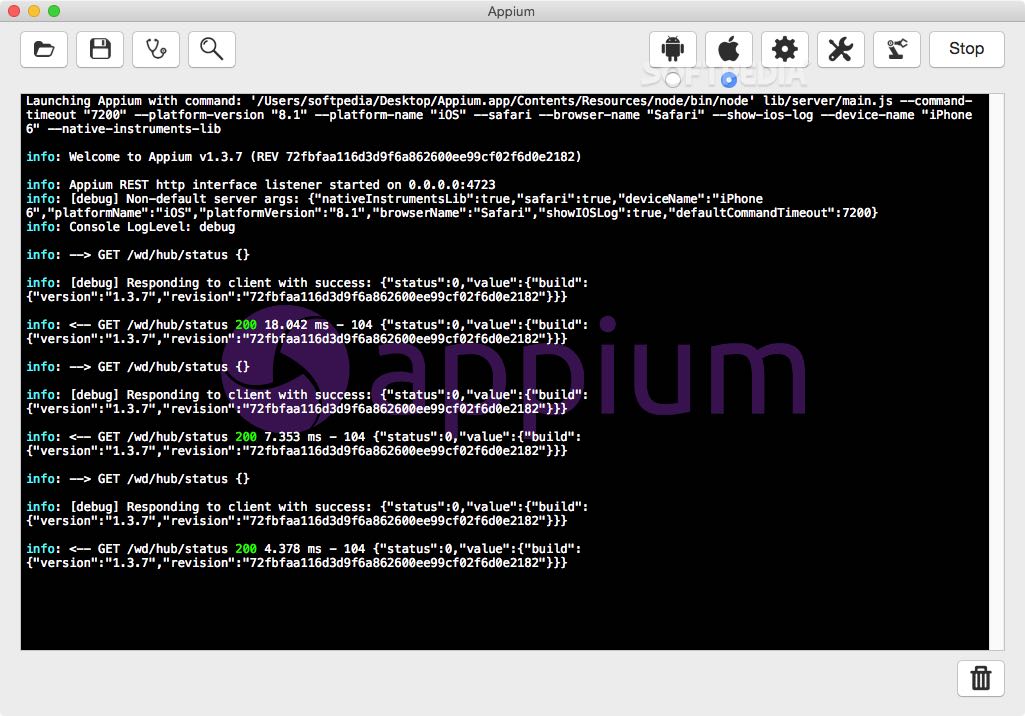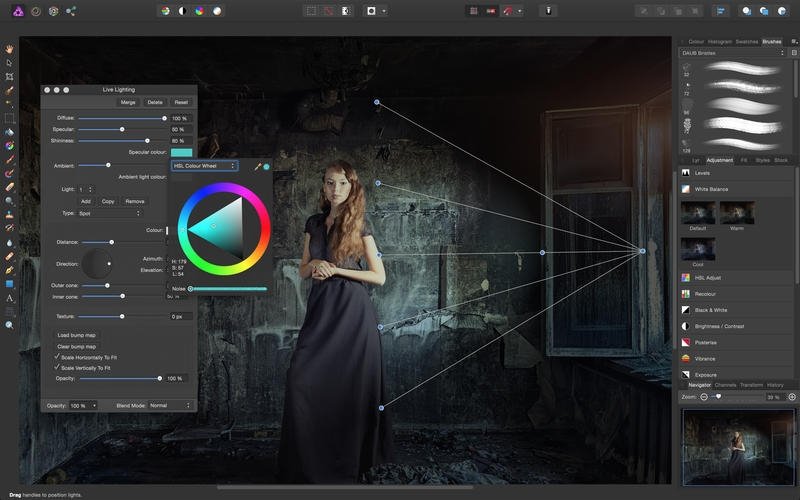Hi Friends,Welcome to Tech Tock Tech, In this video will see how to run iOS test in real device using following setup.1. Mac OS version - 10.12.12. Appium Desktop is a desktop UI utility for Mac, Windows, and Linux. It can be used to manage an Appium server and it comes with Appium Inspector bundled. Appium Inspector can be used for local UI elements of a mobile application. The following steps can be used to install the Appium Desktop. NodeJS is a prerequisite — download NodeJS.
Download SDGCAM For PC Windows and Mac can be easily installed and used on a desktop computer or laptop running Windows XP, Windows 7, Windows 8, Windows 8.1, Windows 10 and a Macbook, iMac running Mac OS X. This will be done by means of an Android emulator. Appium’s desktop app supports OS X, Windows and Linux Appium-Desktop for OSX, Windows and Linux We're open for discussion and would love to hear your voice in the conversation about the future of mobile apps testing! Follow this step by step guide to download and install Appium 1.6.x. This article provides detailed steps to install Appium via npm (Node.js). Appium 1.6.5 fixes multiple issues with the previous versions of Appium & supports iOS 11 and Android 7.1 (Nougat). Different ways in which you can download and setup Appium. Courtesy of The Shark Fidelia is an elegant and powerful music player created exclusively for Mac OS X. True Listening: Anyone with a passion for music knows the value of high-quality hardware, whether it’s a perfectly calibrated power amp or world-class pair of speakers.
Latest Version:
Requirements:
Mac OS X 10.8 or later
Author / Product:
Kornel Lesiński / ImageOptim for Mac
Old Versions:
Filename:
ImageOptim1.6.5.tar.bz2
MD5 Checksum:
1b646624f1f71cc753d303d0c4d40b6c
Download for Mac » macOS Apps » iGallery Pro for Instagram 1.6.5. IGallery Pro for Instagram 1.6.5. IGallery (was InstaMaster) is an excellent app that provides the best Instagram experience. Mozilla thunderbird download for mac. Besides viewing feeds and popular and nearby photo/videos, you can also upload photos to Instagram directly from your Mac.
ImageOptim is excellent for publishing images on the web (easily shrinks images “Saved for Web” in Photoshop). It's useful for making Mac and iPhone/iPad applications smaller (if you configure Xcode to allow better optimization).
Image Optim removes EXIF metadata, such as GPS position and camera's serial number, so that you can publish images without exposing private information (but there's an option to keep the metadata if you need it).
Features and Highlights
Faster web pages and apps
Reduces image file sizes — so they take up less disk space and download faster — by applying advanced compression that preserves quality.
Image files scrubbed clean
Removes invisible junk: private EXIF metadata from digital cameras, embedded thumbnails, comments, and unnecessary color profiles.
Best tools with drag'n'drop
Seamlessly combines all the best image optimization tools: MozJPEG, Pngcrush, pngquant, 7zip and Google Zopfli. All Free and Open-Source.
Note: Requires 64-bit processor.
The application I am testing is a web based app. Is it possible to use Appium to test this? On their website it states 'Appium is an open source test automation framework for use with native and hybrid mobile apps.'
So I am unsure if this will work for my web app as it is not a native app or hybrid app.
Can someone enlighten me?
Thanks!
user1523236user15232366 Answers
First of all, you need to know what kind of web application you want to test. According to information from Saucelabs
there are three types of web application:
- Native application
Yes, you can test it using Appium which is a popular tool for mobile testing. - Hybrid application (Native + webview)
Yes, you can test it with Appium but with a little trick that you may need to change the context to switch to webview mode. appium.io - Web app (app that is accessible from browser installed on your mobile device, not the one you can download and install)
Yes, and the details are at appium.io too.
Besides, there is actually another type of app: hybrid app, but with customized webview.
I've been struggling with it recently because I have trouble to find and switch to the webview mode.
I have found Appium to be very cumbersome in testing mobile web applications due to the fact that touch actions are not well supported. From a Java standpoint, I have found there to be two main options for talking to Appium: the Selenium RemoteWebDriver and the AppiumDriver from the Appium Java client.
Selenium RemoteWebDriver
Until now I have been able to test our web app on an Android device using the selenium RemoteWebDriver and RemoteTouchScreen. Using Selenium 3.6.0 and Appium 1.6.5, I have tested 4 different methods to click an element:
On Android, the first 3 methods work, but 4 throws a 'not supported' exception. I have opted to use method 1 for clicks/taps and 3 for gestures.
On iOS, methods 1, 2 and 4 throw a 'not yet supported' exception and method 3 does nothing. Since I was not prepared to invest the time to troubleshoot that, we are only testing on Android for now in the hopes that Appium will be improved and iOS will be better supported.
Appium Java client
My experience with the Appium java client (version 5.0.4) was worse still. There doesn't seem to be a comprehensive tutorial on how to do touch actions, only a few code snippets flying around on the interwebs. So my answer to this question is an attempt at creating one.
First instantiate the driver and navigate to a page:
Then perform a touch action:
This results in: org.openqa.selenium.WebDriverException: Method has not yet been implemented
From this forum post I deduced that I have to switch context to be able to do touch actions. Attempt two:
That works. However, only for the By.id selector. I could not find any other selector that works when in the NATIVE_APP context. And since most elements in our web site lack an id, I need an xpath selector. Attempt three:
Which resulted in: org.openqa.selenium.NoSuchElementException: An element could not be located on the page using the given search parameters.
Other workarounds that I could think of, such as selecting the WebElement in the CHROMIUM context and then carrying over the location to the NATIVE_APP context is not an option since the coordinate systems differ (browser pixels vs screen pixels).
And don't forget to return to the default CHROMIUM context after each touch action. So the complete code of the only working example becomes:
At this point my conclusion is that testing mobile web applications with Appium is not quite there yet.
Yes, I'm pretty sure you can, have a look here:
Download Appium For Windows
EDIT: outdated link fixed link to appium doc
Also, a related question here
Appium 1.6 5 Download For Mac
qefzecqefzecIt is possible, here is example how to create instance for safari in Ruby:
capabilities = {
before download appium and click launch to start appium server.
If you are talking about Mobile web apps, yes you can use Appium for testing them
Yes, it's possible for Appium to test both native and hybrid Apps.
For Windows machine, download: Appium For Windows.For MAC machine, download: Appium dmg file.
Windows need:Just Appium.exe + .apk file(android) + testing device + Android SDK installed.
MAC needsAppium DMG file + .app/.ipa file + testing device + XCODE (provisioning certificate) + ANT + ios-webkit-proxy-debug.
For Web apps, as they are purely browser-based, Appium works well on them also.
Link for reference:https://github.com/appium/appium/blob/master/docs/mobile-web.md
 user1803551
user1803551
Not the answer you're looking for? Browse other questions tagged appium or ask your own question.
System Requirements
To go further Katalon Studio, you need to ensure the system requirements on Windows as below:
| Operating System | Windows 7, Windows 8, Windows 10, macOS 10.11+ |
|---|---|
| CPU | 1 GHz or faster 32-bit (x86) or 64-bit (x64) processor |
| Memory | 1 GB RAM (32-bit) or 2 GB RAM (64-bit) |
| Hard Drive | at least 1 GB available hard disk space |
Setup Android on Windows
In order to fully run test on Windows OS, you need install Appnium, NodeJs and USB Debugging. Katalon support only Android on Windows OS.
Install Appium Mac
Appium is an HTTP server written in Node.js which creates and handles multiple WebDriver sessions for different platforms like iOS and Android. Appium is part of the Node.js server, which allows automated testing on Android and iOS devices, including native and hybrid devices. One of the core tenets of Appium is that test codes can be written in any framework or language like Ruby on Rails, C# and Java without having to modify the apps for automation purposes. The interaction between node.js server and Selenium client libraries is what ultimately works together with the mobile application.
We need to enable USB debugging to run the .apk file on the emulator or real devices, from which we can inspect /capture the element for test script.
Install Node.js
- Download and install Node.js at here . Make sure you install Node.js into a location where you have full Read and Write permissions.
When installing Node.js, make sure that the Add to PATH option is checked. To make sure Node.js is installed correctly, open Windows command line and type the command below to see if system can find Node.js:
C:> where node
Install Appium
- Open Command Prompt of Windows and input following command to install Appium:
npm install-gappium - Open Katalon Studio and go to the Windows > Katalon Studio Preferences > Katalon > Mobile settings. Set Appium Directory to the installed folder. By default, it’s usually installed at C:Users{your login account}AppDataRoamingnpmnode_modulesappium.
Setup Devices
- Install USB Driver for your phone, you can download it from the device manufacturer site. Note: If your Android phone is one of Google Nexus series, please skip this step because Android SDK already include the driver.
- Turn on the phone developer mode (go to Settings -> Developer options).
- Connect your Android device to the computer using USB cable. Just confirm if prompted for Accepting/Trusting the phone.
Test Execution
- Launch Katalon Studio.
- Open a test project.
- Open/Create a test case or test suite.
- Select the option to execute with the Android device from the Run button of the main toolbar. (This version of Katalon Studio for Windows OS support only supports Android devices).
- Select your device from the Android Devices list. Click OK.
Note: If you don’t see any device in the list, check to see if the developer option of the phone is turned on (see Setup Device section above), then try to reconnect the device again until you are prompted for accepting/trusting the computer, and make sure you accept it.
Appium For Ios
You are done. Enjoy it!